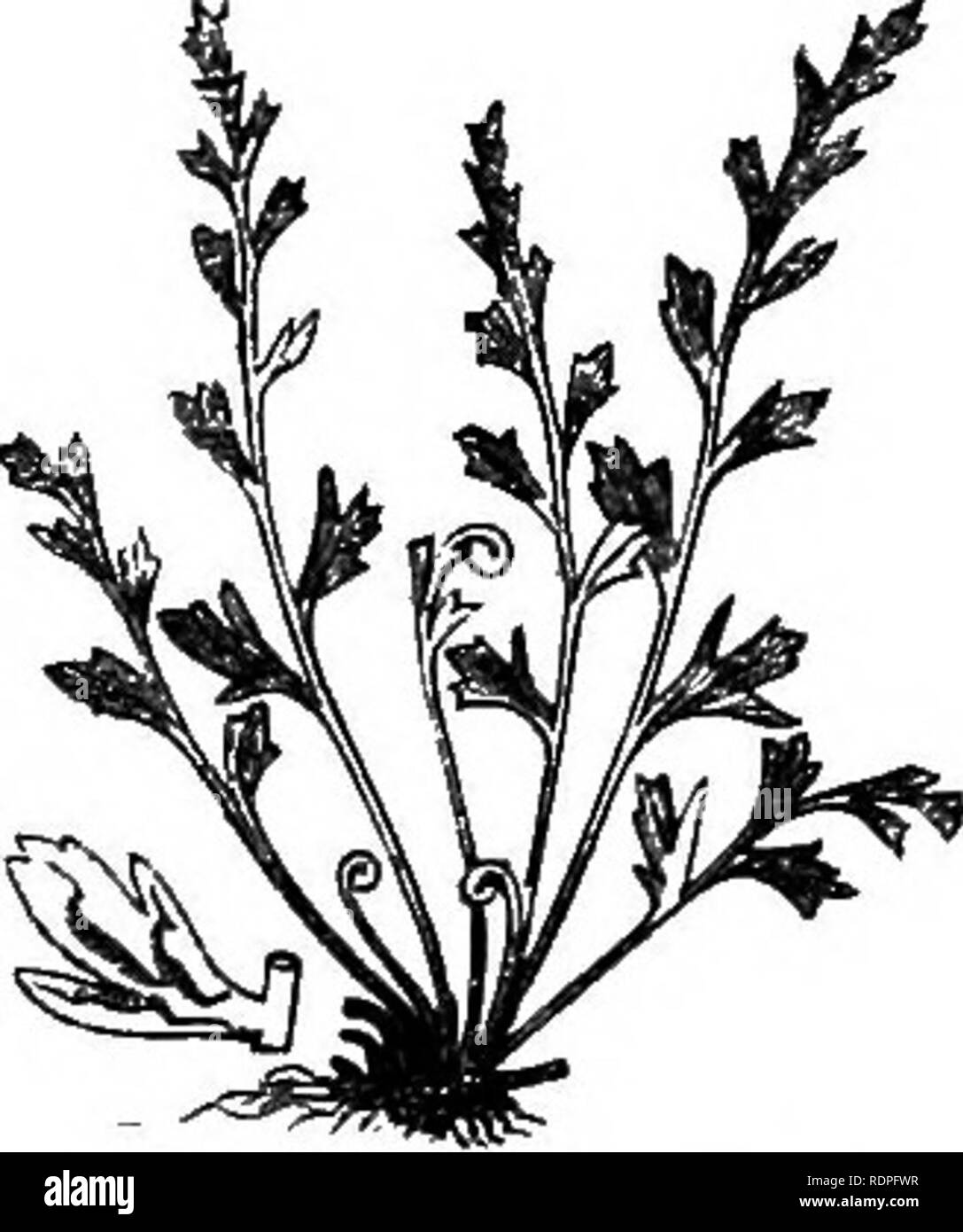. My garden, its plan and culture together with a general description of its geology, botany, and natural history. Gardening. one of my finer specimens was severely injured, and the gardener states that it was attacked by rats, who used the fronds to construct a nest. I wish the animals would have contented themselves with a fern of less beauty. The sporangia of T. speciosnm is very interesting and distinct (fig. 865). Of the British Aspleniums, although I never could grow the A. marinum out of doors, it flourishes in the indoor fernery. Plants of the A. trichomanes, â T. spcciosum. from Dev

Image details
Contributor:
The Book Worm / Alamy Stock PhotoImage ID:
RDPFWRFile size:
7.1 MB (223.2 KB Compressed download)Releases:
Model - no | Property - noDo I need a release?Dimensions:
1446 x 1728 px | 24.5 x 29.3 cm | 9.6 x 11.5 inches | 150dpiMore information:
This image is a public domain image, which means either that copyright has expired in the image or the copyright holder has waived their copyright. Alamy charges you a fee for access to the high resolution copy of the image.
This image could have imperfections as it’s either historical or reportage.
. My garden, its plan and culture together with a general description of its geology, botany, and natural history. Gardening. one of my finer specimens was severely injured, and the gardener states that it was attacked by rats, who used the fronds to construct a nest. I wish the animals would have contented themselves with a fern of less beauty. The sporangia of T. speciosnm is very interesting and distinct (fig. 865). Of the British Aspleniums, although I never could grow the A. marinum out of doors, it flourishes in the indoor fernery. Plants of the A. trichomanes, _ â T. spcciosum. from Devonshire, grow luxuriantly in the Fern Glen. A. viride grows in the same situation, between two blocks of sandstone. In the Trossachs I met a collector with a splendid handful of A. viride, the fronds of which far surpassed those of my plants, and which showed the fern to be an exquisitely beautiful species. The A. Ruta-muraria grows at Highgate, Hampton Court, and all over the country, either- in mortar, or where a calcareous spring deposits its chalky matter over the ground; I have gathered it in such a situation near Whitby. Although common, it is a difficult fern to grow, and I am constantly obliged to renew it. The A. germanicum (fig. 866) is very rare in England. Plants which were brought for me from the Black Forest by Mrs. Rennie have grown admirably; and I have also Fig. 866.âAsplenium , « . , . germanicum. the A. septetitrtonale, from plants which I have brought from Edinburgh and from the St. Gothard Pass, on the Italian side, but which I find rather difficult to grow. The A. Adian- tum-nigrum I have found on the Addington Hills, but not lately. It is a beautiful fern, and requires a spot constantly damp, though not wet. The A. lanceolatum has been brought to me, by Mr. Gray, from the Channel Islands, but I believe that I have never yet grown it successfully out of doors. The A. fontanum is a charming fern. It is difficult, if not impossible, to grow without the